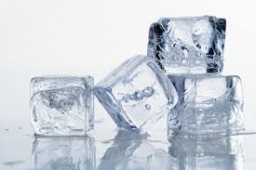Ice to boiling water
Calculate the heat needed to convert 5kg of ice at a temperature of -5°C to water with a temperature of 100°C.
c (water) = 4200 J/°C/kg, c (ice) = 2100 J/°C/kg. The mass group heat of solidification of water is l = 334 kJ/kg.
Calculate the heat that 1k g of water must release to turn it into ice.
c (water) = 4200 J/°C/kg, c (ice) = 2100 J/°C/kg. The mass group heat of solidification of water is l = 334 kJ/kg.
Calculate the heat that 1k g of water must release to turn it into ice.
Final Answer:

You need to know the following knowledge to solve this word math problem:
Units of physical quantitiesthemes, topicsGrade of the word problem
Related math problems and questions:
- Latent heat
 How much heat is needed to take from 100 g of water at 20°C to cool to the ice at -18°C? Mass heat capacity c (ice) = 21kJ/kg/°C; c (water) = 4.19 KJ/kg/°C and the mass group heat of solidification of water is l = 334kJ/kg
How much heat is needed to take from 100 g of water at 20°C to cool to the ice at -18°C? Mass heat capacity c (ice) = 21kJ/kg/°C; c (water) = 4.19 KJ/kg/°C and the mass group heat of solidification of water is l = 334kJ/kg - Specific heat
 How much heat must we add to turn 25 kg of ice at a temperature of -15 degrees Celsius into water with a temperature of 23 degrees? Specific heat of fusion 333 kJ/kg.
How much heat must we add to turn 25 kg of ice at a temperature of -15 degrees Celsius into water with a temperature of 23 degrees? Specific heat of fusion 333 kJ/kg. - By mass
 How much heat must we supply to completely convert potassium weighing 45 kg at a temperature of 22.4 °C into potassium at a temperature of 98 °C? The specific heat of fusion is 25.5 kJ/kg, the melting point is 63.32 °C. The specific heat capacity of potas
How much heat must we supply to completely convert potassium weighing 45 kg at a temperature of 22.4 °C into potassium at a temperature of 98 °C? The specific heat of fusion is 25.5 kJ/kg, the melting point is 63.32 °C. The specific heat capacity of potas - Lead melt
 Find the heat needed to melt an object made of lead weighing 250g and an initial temperature of 35°C. Lead melts at 327°C at normal pressure. Mass heat capacity of lead c = 129 J/kg • K and mass latent heat of lead lt (t is the subscript) = 22.6 kJ/kg.
Find the heat needed to melt an object made of lead weighing 250g and an initial temperature of 35°C. Lead melts at 327°C at normal pressure. Mass heat capacity of lead c = 129 J/kg • K and mass latent heat of lead lt (t is the subscript) = 22.6 kJ/kg. - Receiving heat
 How many degrees Celsius was an iron cylinder weighing 300 g heated in a water bath if it received heat of 7.2 kJ? (specific heat capacity of iron c = 0.46kJ/kg/ºC)
How many degrees Celsius was an iron cylinder weighing 300 g heated in a water bath if it received heat of 7.2 kJ? (specific heat capacity of iron c = 0.46kJ/kg/ºC) - Temperature 83492
 How much heat is needed to turn 1kg of ice at a temperature of -10℃ into steam at a temperature of 100℃?
How much heat is needed to turn 1kg of ice at a temperature of -10℃ into steam at a temperature of 100℃? - Heat transfer
 We placed a lead object weighing 0.4 kg and 250°C in 0.4 L water. What was the initial temperature of water t2 if the object's temperature and the water after reaching equilibrium was 35°C? We assume that the heat exchange occurred only between the lead o
We placed a lead object weighing 0.4 kg and 250°C in 0.4 L water. What was the initial temperature of water t2 if the object's temperature and the water after reaching equilibrium was 35°C? We assume that the heat exchange occurred only between the lead o
